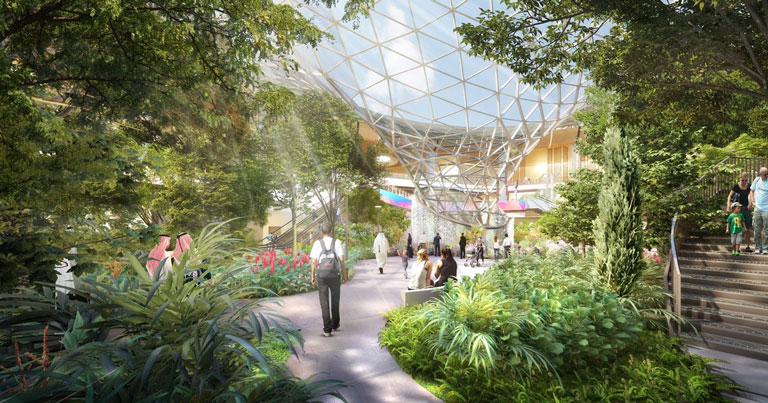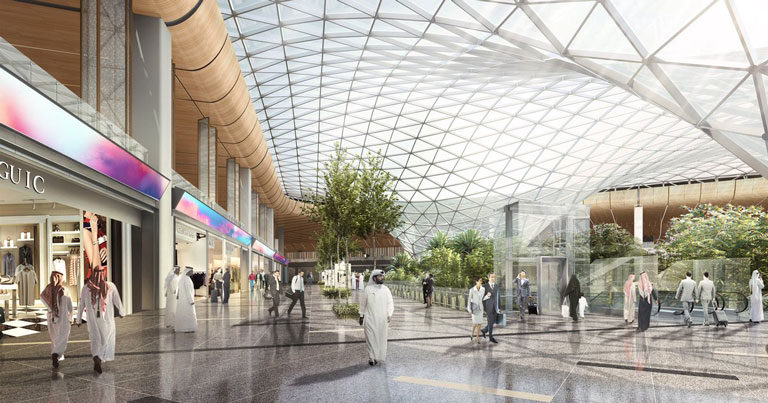
Hamad International Airport (HIA) has revealed plans for its second expansion phase, as Qatar prepares to host the FIFA World Cup in 2022.
A 10,000sqm indoor tropical garden and a 268sqm water feature will be the focal points of the expansion project.
The expansion will take place in two phases. Phase A, scheduled to commence by early 2020, will comprise the central concourse linking concourses D and E and will increase the airport’s capacity to more than 53 million passengers annually by 2022.
Phase B, which will be completed after 2022, will extend concourses D and E to further enhance the airport’s capacity to more than 60 million passengers annually.

The expansion plan also includes 11,720sqm of landscaped retail and food & beverage space, with contemporary retail and dining concepts among other leisure attractions and facilities, as well as a 9,000sqm Qatar Airways Al Mourjan Business Lounge, located above the retail space with views over the tropical garden. The lounge will include additional spas, gym, restaurants and business centres as well as other passenger facilities.
Qatar Airways Group Chief Executive, H.E. Akbar Al Baker, said: “The expansion of Hamad International Airport is a vital part of the future success of the Qatar Airways Group, and of course of the country’s preparations to host the 2022 World Cup and beyond. It is also a strong sign that Qatar’s economy is robust and acts as a further economic stimulus, providing excellent opportunities for local and international contractors.
“Plans for the phase two expansion focuses on capacity and passenger experience – we want to provide even better airport journeys to more people around the world. The expansion will allow us to do this.”
Engr. Badr Mohammed Al Meer, Chief Operating Officer at HIA, added: “Since we started our operations in 2014, it has been our goal to provide our passengers with a unique travel experience, keeping their needs as our top priority. The expansion will continue to redefine the airport experience, cementing HIA’s reputation as a destination gateway and critical international hub.
“Our expansion has been designed to seamlessly integrate with the existing terminal, allowing smooth passenger flow and improving the overall passenger experience by minimising travel distances for connections and providing clarity and intuitive wayfinding. The beautiful new landscaped spaces and water feature will allow our passengers to benefit from the calming effects of nature, thus improving their level of comfort while with us. Our ultimate aim at HIA is to become a destination in our own right, not just a gateway.”
Moreover, the terminal building will integrate innovative measures of energy efficiency across the entire building, and is expected to become the first airport in the MENA region to achieve 4-star Global Sustainability Assessment System (GSAS) rating.
The flora for the indoor tropical garden will be brought in from sustainable forests from around the world.
Other significant features include a new transfer area which will help shorten passengers’ connection times and will improve their overall transfer experience at HIA as well as the central concourse that will accommodate nine additional wide-body aircraft stands.
The HIA expansion will also see the construction of a new cargo terminal, expected to be complete by 2030, that will increase capacity handled to an estimated 3.2 million tons per year.






